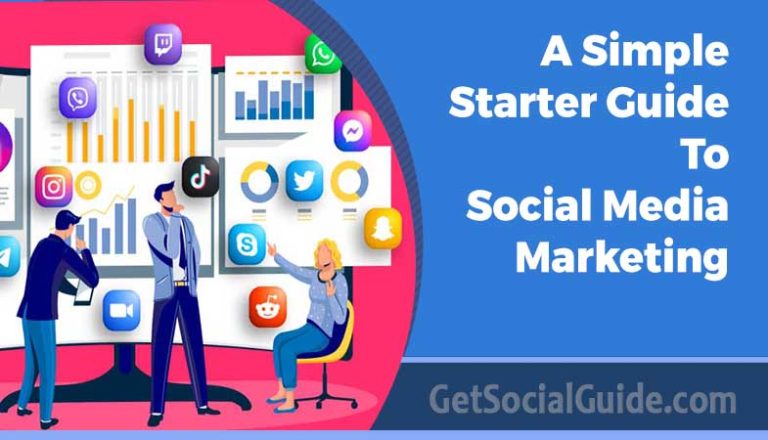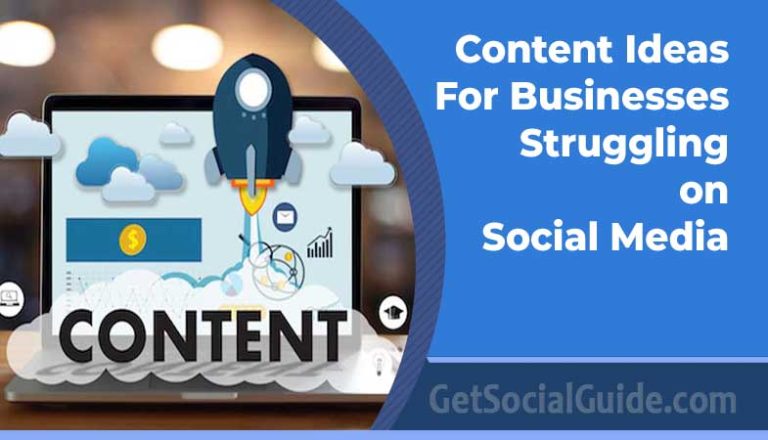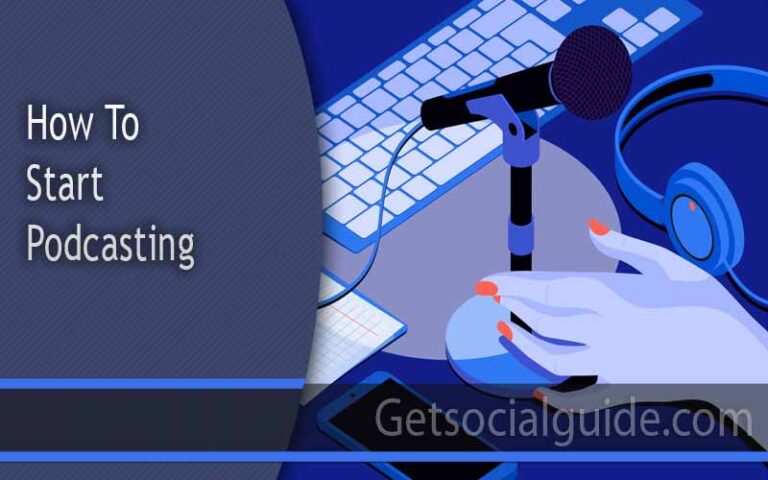5 Ways To Find Micro-influencers For Your Small Business

Who are micro-influencers?
Micro-influencers are influencers with about 1K to 10K followers. While this number seems very low compared to big social media influencers with millions of followers, micro-influencers are quite effective. Especially for small businesses.
In today’s digital age, where a significant portion of consumer activity occurs online, social media promotion has become a vital component of online marketing for businesses of all sizes. Here’s why it’s particularly crucial for small businesses:
- Cost-Effective Reach: Social media platforms offer an affordable way to reach a wide audience. Unlike traditional advertising methods, social media allows small businesses to promote their products or services without the need for a substantial marketing budget.
- Direct Engagement: Social media platforms provide a direct line of communication with potential customers. This engagement allows small businesses to build brand awareness, trust, and customer loyalty.
- Level Playing Field: On social media, small businesses can compete on a relatively level playing field with larger competitors. Creative and engaging content can attract attention and compete with established brands.
Social media influencers are individuals who have established credibility and a dedicated following in a particular niche or industry. They can have a significant impact on their followers’ purchasing decisions. Here’s why collaborating with influencers can be advantageous for small businesses:
- Authentic Recommendations: Influencers are seen as experts or authorities in their respective niches. When they recommend a product or service, their followers perceive it as a genuine and trustworthy recommendation.
- Targeted Reach: Influencers often have highly engaged, niche-specific followers. This means that by partnering with the right influencer, small businesses can reach their exact target audience with precision.
- Increased Exposure: Influencers can introduce a small business to a broader audience quickly. This exposure can lead to increased brand awareness, website traffic, and potentially higher sales.
3. The Case for Micro-Influencers:
Micro-influencers are a subset of social media influencers with a smaller, but highly engaged following, typically in the range of a few thousand to tens of thousands of followers. Here’s why they are particularly relevant for small businesses:
- Affordability: Micro-influencers are often more cost-effective to collaborate with compared to macro-influencers or celebrities. This makes them an ideal choice for businesses with limited marketing budgets.
- Niche Expertise: Micro-influencers often focus on specific niches or industries. Their content resonates deeply with a specific audience, ensuring that your product or service reaches the right people.
- Higher Engagement Rates: Micro-influencers tend to have higher engagement rates because their followers are genuinely interested in their content. This means that the promotion is more likely to generate authentic interactions.
In conclusion, for small businesses, the combination of social media promotion and influencer marketing, particularly with micro-influencers, can be a potent strategy. It allows small businesses to cost-effectively tap into the vast potential of online marketing, engage with their target audience directly, and leverage the trust and authenticity that influencers bring to the table. By carefully selecting the right influencers, small businesses can maximize the impact of their online marketing efforts.
The importance of micro-influencers
Typical influencers often include public figures, industry experts, or celebrities. While they may boast a large following, not all of their followers necessarily share an interest in your business. In contrast, micro-influencers offer a more targeted approach with a highly engaged and focused group of followers. Collaborating with the right micro-influencer can significantly enhance your business’s visibility within a more relevant audience.
Utilizing micro-influencers offers several advantages:
- Enhanced Relevance: Micro-influencers facilitate social interactions with a highly pertinent audience that aligns closely with your business niche and offerings.
- Cost-Efficiency: Launching influencer campaigns with micro-influencers tends to be more cost-effective. Their fees are typically lower, making it a budget-friendly option, especially for small businesses.
- Ease of Initiation: Partnering with micro-influencers is often a more straightforward and accessible process, making it easier to initiate collaborative efforts.
- Effectiveness for Small Businesses: Micro-influencers prove to be more effective than mass influencers, particularly when promoting small businesses. Their authenticity, niche expertise, and the higher engagement rates among their followers make them a powerful marketing tool.
Furthermore, research data underscores the fact that influencers boasting a massive follower count may actually exhibit lower engagement rates. This highlights the importance of considering factors beyond follower quantity, emphasizing the value of micro-influencers’ more engaged and relevant audiences.
Finding micro-influencers for your small business

when considering micro-influencers for your small business’s social media promotion, it’s crucial to ask three fundamental questions:
- Relevance of the Audience: Does the influencer have a relevant audience for your business? It’s essential to ensure that the influencer’s followers align with your target demographic and have a genuine interest in your products or services.
- Engagement Levels: How much engagement does the influencer have with their followers? High engagement rates indicate that the influencer’s audience is actively interacting with their content. This engagement can lead to more effective promotion of your business.
- Follower Count: Does the influencer have a sufficient number of followers, typically ranging from 1,000 to 10,000? While micro-influencers have smaller follower counts compared to macro-influencers, they should still have a reasonably sized audience to make the collaboration worthwhile.
Now, let’s explore some practical strategies for identifying and partnering with relevant micro-influencers to promote your small business on social media:
- Use Social Media Platforms: Utilize platforms like Instagram, Twitter, and TikTok to search for potential micro-influencers within your niche. You can use relevant hashtags and keywords to discover influencers who are actively engaging with your target audience.
- Influencer Marketing Tools: There are various influencer marketing tools available that can help you identify suitable micro-influencers. These tools provide data on engagement rates, audience demographics, and follower counts, making it easier to evaluate potential influencers.
- Engage in Online Communities: Participate in online communities and forums related to your industry or niche. These communities often have active micro-influencers who share their insights and content. Engaging with them can lead to potential collaborations.
- Leverage Social Media Analytics: Analyze the engagement and following of your own social media followers. You may discover that some of your existing customers or followers have the characteristics of micro-influencers. Reach out to them to explore collaboration possibilities.
- Attend Industry Events: Attend industry-specific events, conferences, or seminars. These gatherings often attract micro-influencers who are passionate about your field. Networking in person can be an effective way to establish connections.
- Explore Influencer Marketplaces: Consider using influencer marketplaces or agencies that specialize in connecting businesses with micro-influencers. These platforms streamline the influencer search and collaboration process.
- Evaluate Content Quality: Beyond the quantitative metrics, assess the quality of the influencer’s content. Ensure that their style, tone, and values align with your brand to maintain authenticity in your collaborations.
Identifying micro-influencers among your existing social media followers can indeed be a valuable strategy for businesses with established social media presence. Here’s a step-by-step guide on how to identify and collaborate with these micro-influencers:
Step 1: Identify Micro-Influencers Among Your Followers
- Review Your Follower List: Start by going through your social media follower list, particularly on platforms like Twitter and Instagram. Look for individuals who have follower counts ranging from 1,000 to 10,000.
Step 2: Assess Their Relevance
- Examine Their Profiles: Once you’ve identified potential micro-influencers based on their follower count, delve deeper into their profiles. Focus on those who regularly post content related to your business niche or industry.
- For instance, if you own a local restaurant, seek out micro-influencers who frequently share posts about food, dining experiences, or local eateries.
- Check Location: If applicable, consider the geographical location of these micro-influencers. For a local business like a restaurant, prioritize those who are in close proximity to your establishment. Their recommendations can have a more significant impact on local customers.
Step 3: Approach and Collaborate
- Reach Out with a Proposal: Contact the selected micro-influencers with a personalized message or email. Express your interest in collaborating with them and explain the mutual benefits. For instance, in the case of a restaurant, you might offer free coupons or discounts in exchange for them sharing images and positive reviews of your establishment with their followers.
- Specify Expectations: Clearly outline your expectations for the collaboration, including the type and frequency of content they should create, any specific messaging or hashtags to include, and the duration of the partnership.
- Build a Relationship: Foster a positive and professional relationship with the micro-influencers. Encourage open communication, provide any necessary resources or information, and ensure they have a great experience working with your business.
- Monitor and Measure: Track the performance of the influencer’s posts to gauge the impact on your business. Use analytics tools to measure key metrics, such as engagement, website traffic, or conversions generated from their promotion.
By identifying and collaborating with micro-influencers from your existing social media followers, you can leverage their influence to reach a relevant and engaged audience while building a more genuine connection with individuals who already have an interest in your business. This approach can be a cost-effective and mutually beneficial way to boost your online presence and drive business growth.
Pros:
Here are the pros of finding micro-influencers from your own social media followers:
- The influencer already knows your business. So you won’t need to do much explanation
- As they are your fans, they can be easily convinced to post about your business
- If you have a local business, then this is one of the best ways to find local micro-influencers
- Their posts appear to be more natural and authentic than promotional posts from big influencers
Cons:
- Though you’ll definitely find many micro-influencers among your followers, finding people related to your business niche might be difficult
- By relying entirely on influencers who are in your social connections, you might miss other more influential micro-influencers
- Search for influencers using third party tools
You can use social media management tools to help you in influencer research. Some popular tools are:
there are several tools available for identifying micro-influencers to promote your small business. While some of these tools offer free versions, investing in a paid version often provides more comprehensive features and benefits. Here’s an example of how you can use BuzzSumo to find micro-influencers:
Step 1: Go to BuzzSumo
- Visit the BuzzSumo website at https://app.buzzsumo.com/amplification/influencers.
Step 2: Search for Relevant Topics
- In the “Search Bios” field, type a topic name that is closely related to your business. This will help narrow down the search to influencers who are relevant to your niche.
Step 3: Filter by ‘Regular People’
- To identify micro-influencers, select the “Regular people” filter. This filter option is essential for pinpointing individuals who may not be widely recognized as traditional influencers but have influence within your specific area of interest.
Step 4: Sort and Reach Out
- Sort the search results based on your preferences, such as relevancy, page authority, number of followers, etc. Look for profiles with several thousand followers and good page authority. These individuals are likely to have an engaged audience and can be valuable partners.
- Reach out to the identified micro-influencers with partnership proposals, offering incentives that align with your business goals.
Pros of Using Influencer Tools:
- Efficiency: Using tools like BuzzSumo streamlines the process of finding and sorting relevant micro-influencers for your business, saving you time and effort.
- Comprehensive Search: These tools often provide a more extensive database of potential influencers than manual searches, ensuring that you can identify the most suitable candidates.
Cons of Using Influencer Tools:
- Limited Free Versions: The free versions of many third-party influencer tools offer limited functionality. To access advanced features and unlock the full potential, you may need to invest in a paid version.
- Negotiation Skills: Approaching influencers who may not be familiar with your business requires effective negotiation skills to establish mutually beneficial partnerships.
Overall, leveraging influencer research tools like BuzzSumo can be a highly effective way to identify and collaborate with micro-influencers for your small business. While there may be some costs associated with using these tools, the efficiency and potential for finding the right influencers make it a worthwhile investment in your marketing strategy.
Approach bloggers to promote your business
Here’s a summary of the steps and pros and cons associated with each approach:
1. Identifying Micro-Influencers Among Bloggers:
Steps:
- Use Google search and niche-specific tools like Alltop to find relevant bloggers.
- Create a list of potential bloggers along with their contact and social media information.
- Build a relationship with bloggers through interactions on their blogs and social media.
- Approach them for partnership and social media promotion, being transparent about your intentions.
Pros:
- Bloggers can reach a more targeted audience, especially for local businesses.
- Positive mentions in their content can drive relevant traffic to your business for an extended period.
Cons:
- Finding relevant local bloggers in your business niche can be challenging.
- Building relationships with bloggers can be time-consuming.
2. Perform Hashtag Research:
Steps (for Instagram):
- Choose relevant keywords specific to your business.
- Conduct hashtag research on Instagram to identify posts and users related to those keywords.
- Evaluate users based on follower numbers, interaction rate, and post type.
- Make a list of potential micro-influencers and contact them for partnerships or promotions.
Pros:
- You can connect with micro-influencers by sending them complimentary product samples.
- Some micro-influencers may have significant reach despite being categorized as micro-influencers.
Cons:
- Finding suitable micro-influencers through hashtag research can be time and effort-intensive.
- Selecting the right hashtag is crucial to uncovering relevant influencers.
3. Connect at Real-Life Events:
Steps:
- Attend local events, exhibitions, seminars, or workshops related to your business.
- Network with attendees, including potential micro-influencers.
- Face-to-face interactions can lead to meaningful connections with influencers.
Pros:
- Personal meetings can establish strong relationships with micro-influencers.
- You may discover micro-influencers within your existing network.
Cons:
- Availability and accessibility of relevant events may vary by location.
- Building connections through offline events may require more effort.
Steps:
- Explore Facebook and LinkedIn for Groups and professionals related to your business.
- Join relevant groups and observe active members.
- Build relationships with micro-influencers over time on these platforms.
Pros:
- Facebook and LinkedIn provide opportunities to connect with professionals in your field.
- Building relationships on these platforms can lead to valuable partnerships.
Cons:
- Building relationships on Facebook and LinkedIn may take longer compared to Twitter and Instagram.
- The dynamics of these platforms may require a different approach to engagement.
These strategies offer diverse methods for identifying and connecting with micro-influencers who can help promote your small business. Depending on your business’s goals and resources, you can choose the approach that aligns best with your needs and priorities.
Conclusion
Micro-influencers are highly effective for small businesses looking to run social media campaigns. They offer targeted visibility at a reasonable cost. Micro-influencers have engaged followers, focus on specific niches, and maintain authenticity. Their ability to reach a niche audience makes them a valuable asset for small businesses with limited budgets. If you have experience with micro-influencer campaigns for your small business, please share your insights in the comments to help others learn from your experiences.



